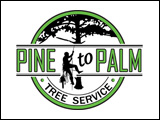The Saskatchewan Pork Development Board says the introduction of a low phytate barley, specifically tailored for monogastric animals, will mean cost savings for livestock producers as well as benefits for the environment.
To encourage pedigreed seed growers to produce sufficient seed supplies to meet local demand, the Crop Development Centre in Saskatoon has been released its CDC Lophy-I hulless barley as a public variety.
Sask Pork producer services manager Harvey Wagner says the variety is a good fit.
It’s a really good step in the right direction to develop feed grains that target the actual individual species and the needs of the individual species of livestock.
In this case it is particularly useful for hogs and also for poultry.
Hogs need to be able to utilize the phosphorus in the barley and this low phytate barley makes more of that phosphorus in the barley available to the hogs when they are consuming it.
We also appreciate the fact that, if the hogs are getting their phosphorus from the barley, producers do not have to add additional phosphorus in the form of mineral phosphorus so it is a cost saving.
For some areas of western Canada it is also a benefit in that there’s less phosphorus in the manure as it is applied to the land.
That’s not particularly a real concern in Saskatchewan, at least for most areas of Saskatchewan.
There might be the odd area where that’s a bit of an issue but generally in Saskatchewan our soils are quite deficient in phosphorus and, if we apply manure at recommended rates, we don’t ever run into that problem but for some areas in Manitoba in particular and parts of Alberta it would be quite useful as well.
Wagner notes, because Lophy is a hulless variety, it has a high energy content, it’s more easily digestible by hogs and poultry and its a great fit.
Source: Farmscape.Ca



